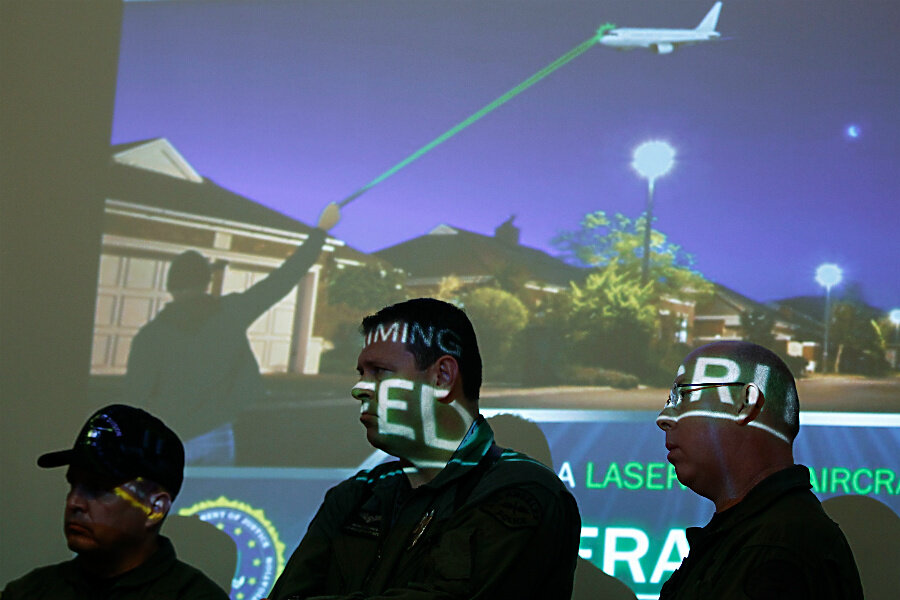Eleven Newark flights hit by lasers Wednesday night
Loading...
| Newark, N.J.
The Federal Aviation Administration is investigating after 11 commercial flights reported they were illuminated by lasers while flying over New Jersey.
The FAA says the incidents occurred Wednesday between 9 p.m. and 10:30 p.m.
The agency says the lasers hit the left and right sides of the cockpits, along with the sides of the planes. There were no reports of injuries.
Lasers can distract or temporarily blind pilots. Pointing one at a plane is a federal crime.
The FAA says at least three of the incidents involved flights near Newark Liberty International Airport.
Three flights were at 3,000 feet and were 4 miles south of the Outerbridge Crossing, which connects Perth Amboy to Staten Island, New York. One flight was headed to LaGuardia Airport.
As The Christian Science Monitor reported, last year the FBI teamed up with the Federal Aviation Administration and the Air Line Pilots Association to combat the use of lasers targeting flights.
“Aiming a laser pointer at an aircraft is a serious matter and a violation of federal law,” Ron Hosko, assistant director of the FBI’s Criminal Investigative Division, said. “It is important that people understand that this is a criminal act with potentially deadly repercussions.”
Although no crashes have occurred due to “lasing,” the problem has grown steadily in recent years. Reported incidents of laser attacks on aircraft in flight in the US have increased more than 1,000 percent since 2005, according to the FAA, from 283 up to 3,960 in 2013 – an average of 11 incidents a day.
Such attacks also have been on the increase in Canada, Australia, New Zealand, and Japan. The FBI estimates that thousands of attacks go unreported every year.
“The increase in reports is likely due to a number of factors, including greater awareness and outreach to pilots to encourage reporting; the availability of inexpensive laser devices on the Internet; stronger power levels that enable lasers to hit aircraft at higher altitudes; and the introduction of green lasers, which are more easily seen than red lasers,” the FAA reports.





